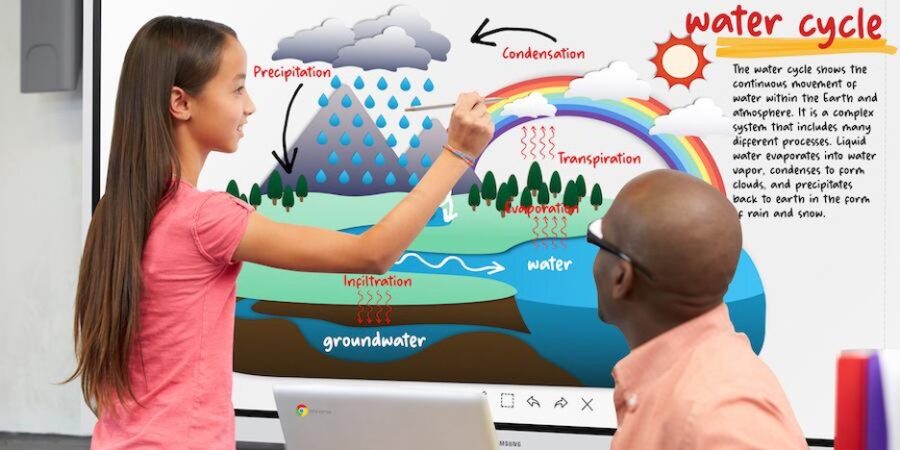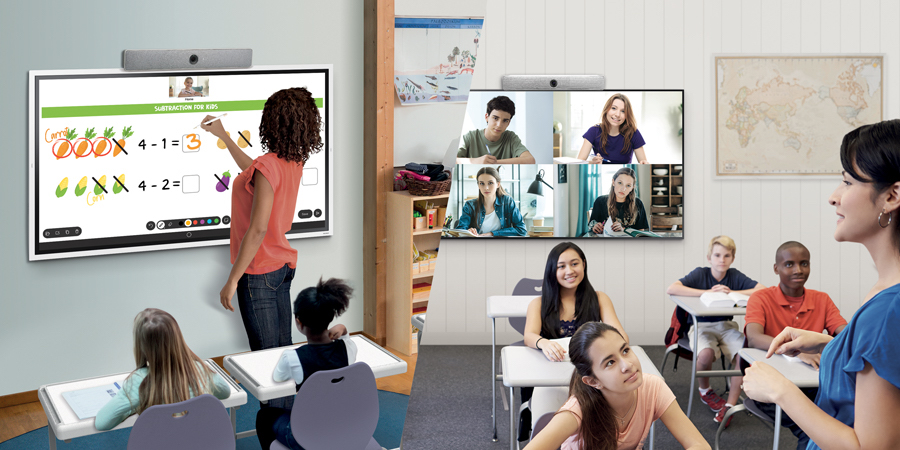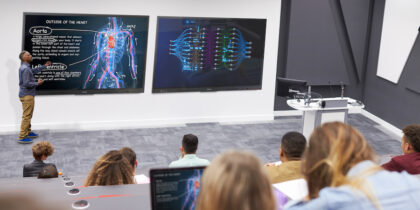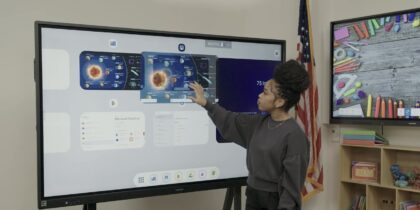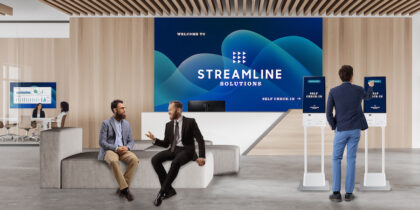Washington Elementary School in Union, New Jersey, teaches pre-K through fourth-grade students all the standard subjects any elementary school child would expect to learn. But in March 2023, the school added to its curriculum options, opening a Social and Emotional Learning (SEL) Lab that includes social and emotional learning tools as well as educators who specialize in teaching the subject.
The principal at the school explained that the lab is specifically used to learn, discuss, and process students’ social skills. They’re confident that it’s more than a matter of addressing the academic needs — it’s equally important to address the needs of the whole child. And an SEL lab is a step forward that does just that.
So, what exactly is SEL, and how can you incorporate it into your school?
What is social and emotional learning?
SEL, at its most basic, teaches students how to handle and deal with emotional and social issues as they come up and focuses on problem-solving. It affects all aspects of a child’s growth including academic, mental, and social. This is key because it gives students the ability to make smarter choices rather than acting out.
It is essential for managing emotions since it can help students learn to deal with normal difficulties that may arise in their life. Those students who don’t have SEL skills may not always make the most successful or appropriate choices, making it harder for teachers to teach and other students to learn. SEL is so important that, during a recent spending analysis of 100 large and urban districts in the U.S., analysts found that 88% are earmarking money for SEL strategies.
More than a feeling: Why is SEL important today?
Incorporating SEL in the classroom has become a popular topic as the social and emotional aftereffects of the pandemic continue to emerge. SEL focuses on “the process through which all young people and adults acquire and apply the knowledge, skills, and attitudes to develop healthy identities, manage emotions and achieve personal and collective goals, feel and show empathy for others, establish and maintain supportive relationships, and make responsible and caring decisions,” according to the Collaborative for Academic, Social, and Emotional Learning (CASEL). These lessons are crucial for children who — through the loss of nearly two years of normal in-class work — have difficulty managing emotions and interacting with other children and adults.
One teacher summed up SEL’s benefits in a National Education Association story by explaining how it’s an evidence-based approach that helps children become successful individuals both inside and outside of the classroom setting.
Blended learning without limits
Simple, scalable and secure display solutions empower educators to take control of curriculum. Download Now
3 ways to incorporate SEL in the classroom with interactive displays
While Washington Elementary School’s SEL lab is a huge benefit to its students, SEL educational strategies can be built into every classroom — and they should be, according to a CASEL meta-analysis. The report found that SEL programs “significantly improve students’ skills.” Students who participated in SEL lessons “demonstrated fewer conduct problems and had lower levels of emotional distress. Especially noteworthy from an educational policy perspective, academic performance was significantly improved.”
Today, many schools are using a variety of tools to help them teach SEL in the classroom. One such option is the use of interactive displays. SEL-based interactive educational tools can help students not only build and strengthen their self-awareness and self-management skills but also their ability to focus and regulate their emotions.
1. Display videos to help identify emotions
Some teachers use interactive whiteboards such as the Samsung Interactive Display to create lessons that help children identify emotions and the appropriate behaviors that go along with them. A teacher can use a board to play videos of people displaying different emotions and use them to help children understand social cues.
For example, an interactive board can also be used as a recording station, where children can record video and share how they feel with classmates via a “Today I feel, … ” exercise. Videos are a good teaching tool, and an interactive display makes it easier to watch a video collaboratively and discuss it as a group. Free video platforms like YouTube have many SEL resources for K-12 learners. Even something as simple as listening to or watching a meditation video as a class can help foster social and emotional control.
2. Access SEL-related games as a class
Part of SEL is learning to collaborate and interact with other people. The display facilitates this by providing a workspace where children can work on activities individually or in teams.
Teachers can use an interactive display to play SEL-related games and activities. Digital games are a collaborative way to help students practice kindness, cooperation and even work on conflict resolution. You can use PowerPoint templates to customize classroom games like Family Feud or Jeopardy, or access online games that offer a playful learning experience designed to help students build social and emotional skills.
3. Create a choice board for SEL activities
The board can also be used for smaller group, one-on-one, or individual SEL learning. For instance, teachers can enable the interactive display to be used as a choice board — an asynchronous learning option that allows students to access Google Slides or PowerPoint and select from a list of activities when they have breaks in their day. This can include SEL games, videos or prompts for students to choose from.
SEL learning is something all educators will need to build into their lessons effectively. With busy schedules, teachers and administrators may want to find options that will help them do so easily. Interactive whiteboards are one such possibility.
Samsung’s latest education technology delivers an engaging digital learning experience inside the classroom. And learn how interactive learning engages students and improves outcomes in this free whitepaper.
